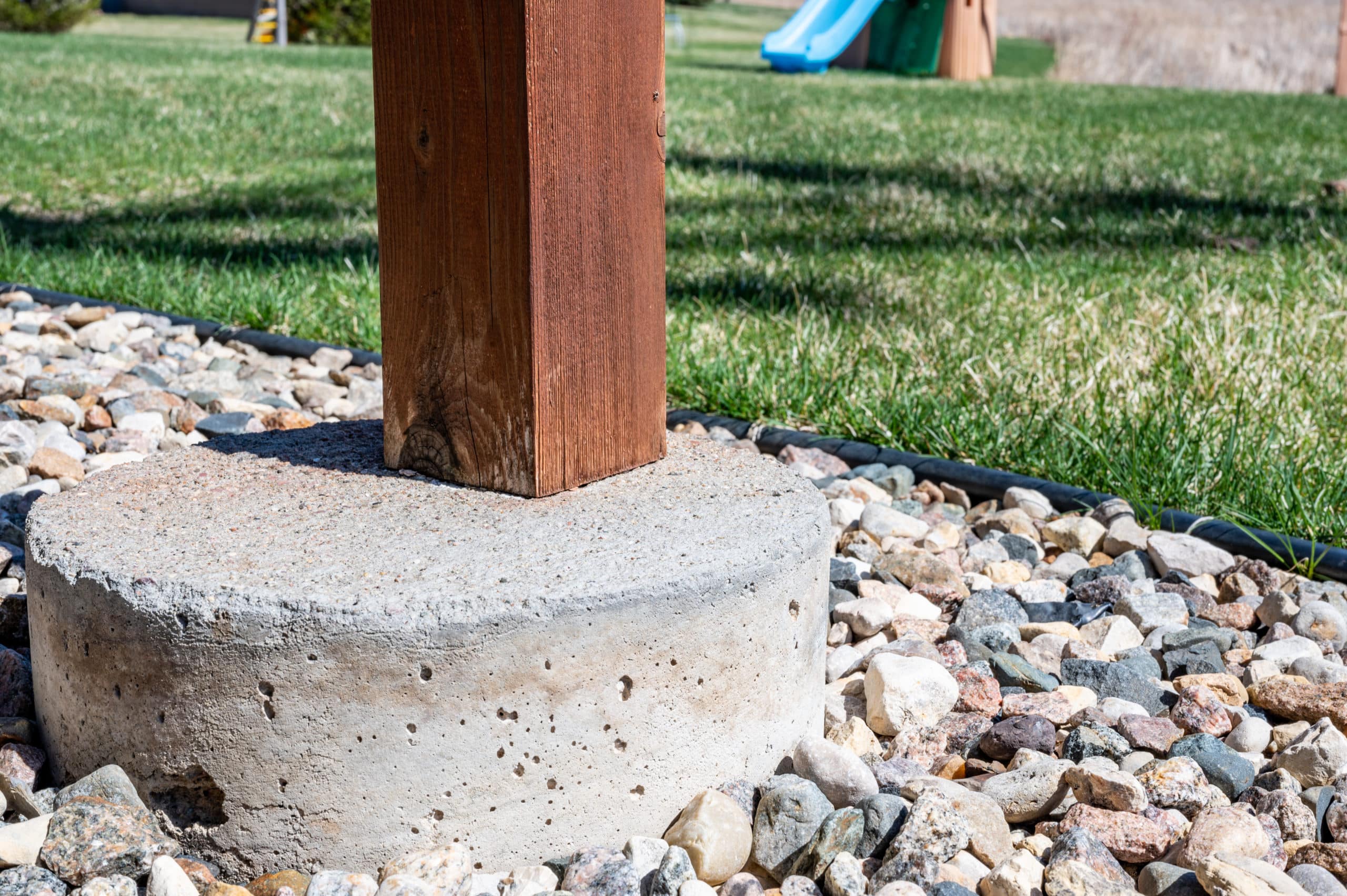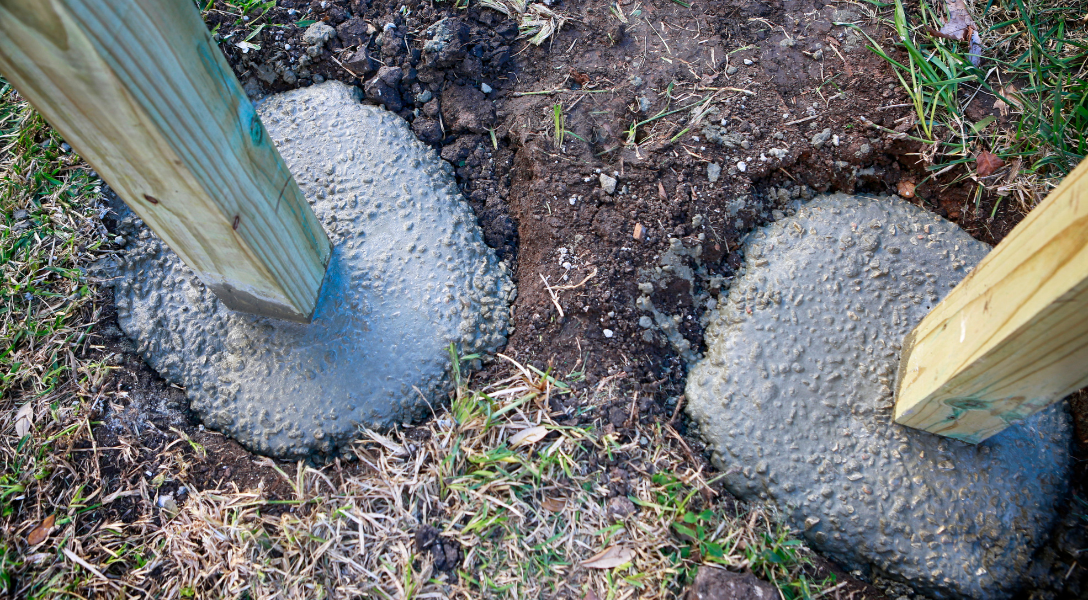Guarantee Security and Longevity With Appropriately Installed Deck Footings
Deck footings may not be the most glamorous facet of deck construction, however they play a crucial duty in ensuring stability and longevity. In this discussion, we will explore the importance of proper deck grounds, aspects to think about throughout installment, various kinds of grounds available, step-by-step installation overview, and maintenance ideas for making sure durable grounds.

Relevance of Correct Deck Grounds
Why are effectively mounted deck grounds critical for the security and long life of your deck? Deck grounds are the foundation on which the deck rests, transferring the lots from the deck to the ground.
Firstly, effectively mounted deck grounds disperse the weight of the deck uniformly, protecting against any kind of irregular settling or sinking. This is especially essential in areas with unstable dirt, as it aids to alleviate the danger of the deck shifting or collapsing. Furthermore, well-installed footings ensure that the deck continues to be degree, avoiding any structural damages that can happen when a deck ends up being uneven.
Second of all, appropriately set up footings give a solid anchor for the deck, protecting against too much motion and persuade. This helps to keep the structural honesty of the deck, minimizing the risk of crashes or injuries. It additionally lessens the deterioration on the deck, allowing it to withstand the components and regular usage for a longer period of time.
Variables to Think About for Deck Footing Setup
When installing deck grounds, there are several essential factors to consider for correct setup. Different soil kinds have various load-bearing capabilities, so it is vital to carry out a soil test to make sure the footings can sustain the weight of the deck and its passengers. By taking into account these factors, you can guarantee the correct setup of deck footings and appreciate a resilient and steady deck.
Kinds Of Deck Grounds to Select From
There are several various kinds of deck grounds offered for you to pick from. Each kind has its very own advantages and negative aspects, so it's necessary to consider your particular needs and the problems of your deck before choosing.
One usual kind of deck footing is the concrete footing. This entails excavating holes in the ground and pouring concrete right into them to develop a solid foundation. Concrete grounds are long lasting and supply superb security, making them appropriate for decks in areas with tough dirt conditions or high wind lots.
An additional choice is the helical pier footing, which consists of a steel shaft with helical plates that are screwed right into the ground. These grounds fast to install and can be made use of in numerous dirt types, consisting of sandy or clay dirts. They are likewise adjustable, permitting for very easy progressing of the deck.
Sonotube footings are one more popular choice. These grounds are produced by placing a cardboard tube in an opening and loading it with concrete. Sonotube footings are reasonably very easy to set up and supply adequate security for smaller decks or in areas with much less demanding dirt problems.

When picking the kind of deck ground, it's critical to take into consideration factors such as dirt problems, deck dimension and weight, regional building ordinance, and personal preferences. By picking the ideal ground kind, you can make sure the stability and durability of your deck.
Step-by-Step Guide for Installing Deck Footings

Determine the area: Begin by marking the specific setting of each footing making use of stakes and string (Deck Footings). Consider any neighborhood building ordinance or policies relating to obstacle distances
Dig the openings: Utilize a post opening digger or an auger to dig the openings for the footings. The deepness will depend upon the frost line in your location and the sort of dirt. Usually, a depth of a minimum of 36 inches is recommended for security.
Level the openings: Make sure that all-time lows of the holes are level (Deck Footings). This can be accomplished by utilizing a degree or a straight board throughout the top of the holes
Add gravel: Location a layer of crushed rock at the end moved here of each opening to boost water drainage and prevent the footing from penetrating the dirt gradually.
Put the ground kinds: Insert the footing develops right into the openings, ensuring they are centered and level. Use stakes to secure them in area.
Mix and pour concrete: Follow the instructions on the concrete mix bag to prepare the concrete. Pour the concrete right into the ground types, loading them entirely.
Smooth the surface area: Use a trowel to smooth the surface of the concrete and remove any air pockets. Allow the concrete to cure according to the producer's directions.
Maintenance Tips for Long-lasting Deck Footings
Proper upkeep is important for making sure the longevity and stability of deck footings. By regularly inspecting and maintaining your deck grounds, you can stop damage and possible security risks.
Regular cleansing is additionally important for preserving deck footings. Dirt, debris, and plant life can accumulate around the grounds, which can result in moisture buildup and decay. Cleansing the footings on a regular basis, utilizing a brush or a pressure washing machine, can help protect against these concerns and prolong the lifespan of your deck.
Along with cleaning, it is necessary to keep the location around the grounds free from any type of obstructions. Avoid stacking items versus the footings or permitting his response plants to grow too near to them. These obstructions can catch wetness and trigger the footings to degrade gradually.
Finally, normal resealing of the grounds is advised to safeguard them from wetness and various other environmental aspects. Applying a waterproof sealer can help prevent water damage and expand the life-span of the footings.
Conclusion
In verdict, appropriate setup of deck footings is crucial for making sure stability and durability of your deck. Variables such as dirt type, load capacity, and neighborhood building regulations need to be considered when choosing the appropriate kind of deck footings. Following a detailed overview for installation and regular upkeep will help to ensure the grounds stay resilient and resilient.
In this discussion, we will certainly discover the significance of proper deck grounds, elements to take into consideration during installment, different kinds of grounds available, detailed installation overview, and upkeep tips for making certain lasting grounds. Deck footings are the structure on which the deck rests, transferring the tons from the deck to the ground.One common kind of deck footing is the concrete ground. Insert the footing types: Insert the ground develops into the openings, ensuring they are focused and level.In final thought, proper installment of deck footings is crucial for making certain stability and long life of your deck.